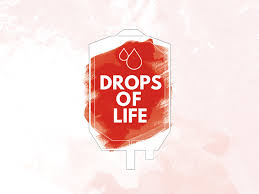January is Blood Donation Month!
 Nearly 40 percent of the U.S. population is eligible to donate blood, but less than 10 percent actually do.
Nearly 40 percent of the U.S. population is eligible to donate blood, but less than 10 percent actually do.
Donating blood is safe. Sterile, disposable needles and supplies are used once and then properly disposed. You cannot contract any infectious disease by donating blood.
Volunteer blood donors must be at least 16 years old, weigh at least 110 pounds and be in good health. Additional height and weight requirements apply to some donors age 22 and younger. Donors who are 16 or 17 must have a signed permission form from a parent or guardian.
It takes about an hour from completing the health history questionnaire, medical screening and post-donation refreshments and snacks. The donation itself only takes about 10 minutes
Every 56 days. Other types of donation have different intervals. To prevent anemia, we track frequent donors to make sure they don’t give more than the maximum allowable blood volume in a rolling 12-month period. Once this limit is reached, we’ll ask donors to wait before donating again.
Every two seconds, someone in the U.S. needs blood. That’s why it’s so important we continuously replenish the supply. And blood has a shelf life. Red blood cells can be used up to 42 days and platelets need to be used in five. All blood types are needed, including the most common blood types.
Following your donation, your transformative gift is typed, tested, processed, stored and distributed to patients who need it in the hospitals we serve. You’ll feel proud knowing you’ve saved up to three lives. When you do good for others, you do good for yourself! If you’d like to see what happens to your blood donation in person, schedule a behind-the-scenes tour of your local donation center.
Vitalant provides blood to 1,000 hospitals across 40 states where it is used in a variety of medical treatments. Your single blood donation can save and enhance the lives of up to three patients. Read stories of those whose lives have been saved by blood donation


